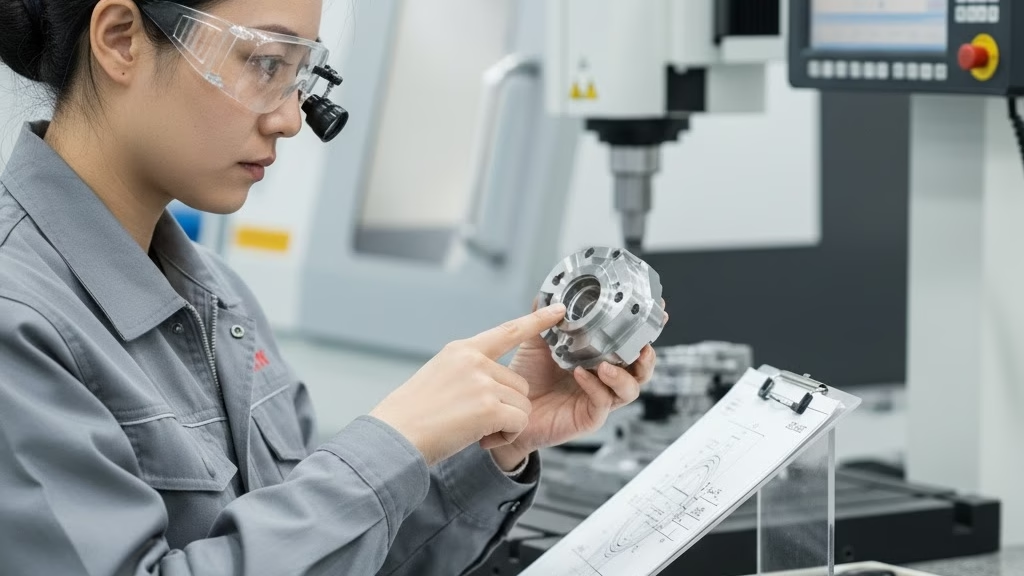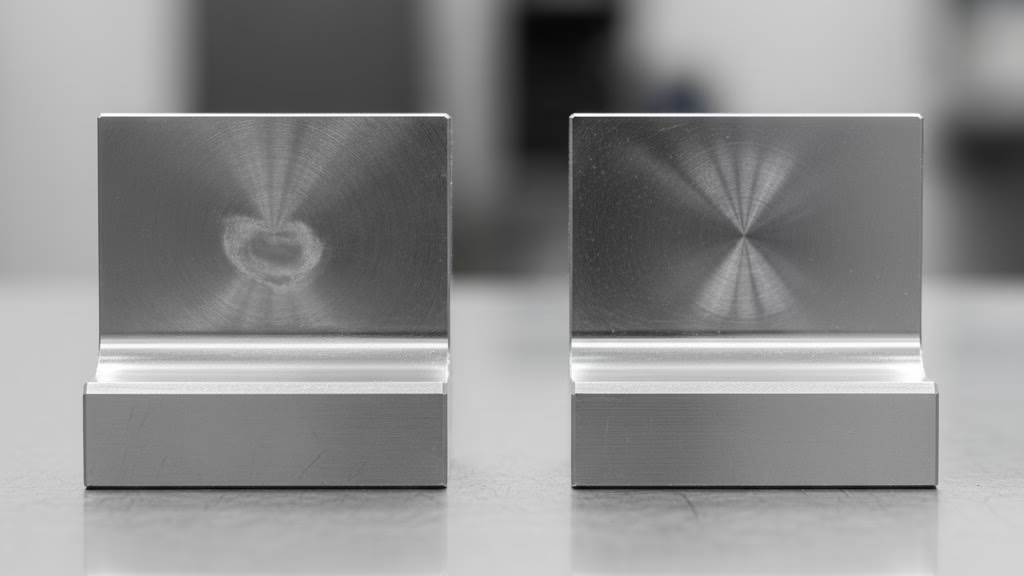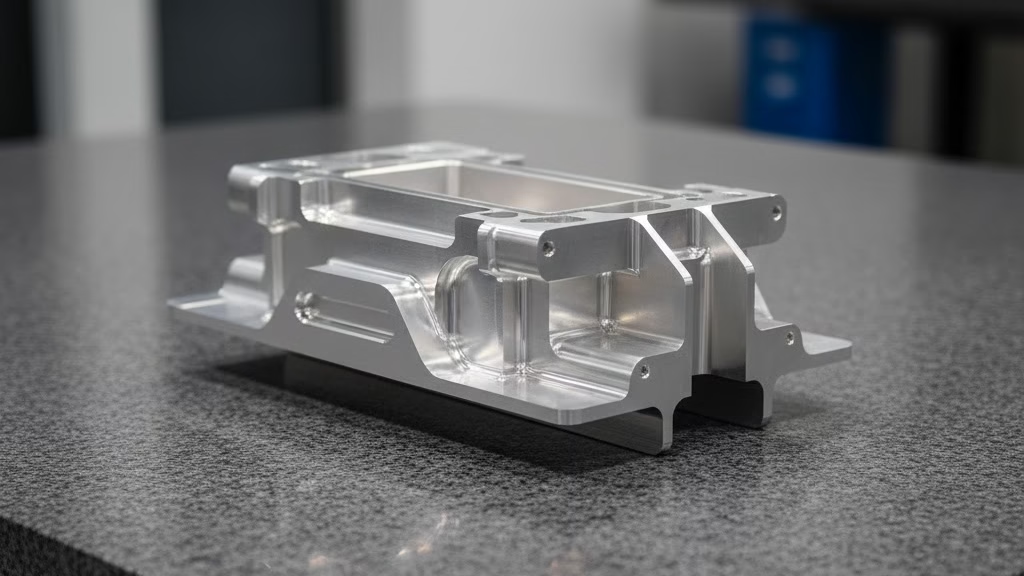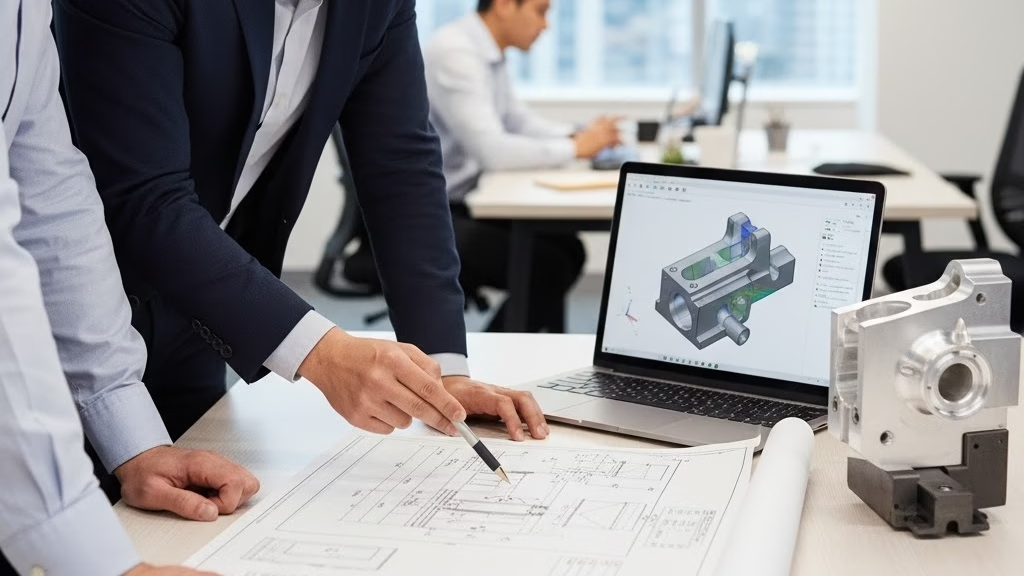Choosing between Inconel, Stainless Steel, and Titanium for high-temperature applications is a critical decision where standard datasheets can be dangerously misleading. This guide provides a practical, real-world framework to help you balance performance, cost, and manufacturability. We give you the tools to make the right choice, every time.
For high-temperature applications, choose Inconel for extreme heat (>650°C) and high mechanical stress, accepting its high cost and difficult machining. Select Stainless Steel as the cost-effective option for moderate heat and low stress. Use Titanium for applications below 427°C where light weight is the top priority.
| Material | Best For | Relative Cost | Machining |
|---|---|---|---|
| Inconel | Extreme Heat & Stress | Very High | Very Difficult |
| Stainless Steel | Moderate Heat & Low Stress | Low | Easy |
| Titanium | Light Weight & Moderate Heat | Medium-High | Difficult |
Now that you have the basics, read on to discover the critical performance traps the datasheets won’t show you. We’ll share real-world case studies and a step-by-step decision framework that goes beyond the numbers. This is the information you need to avoid a million-dollar mistake.
An Overview of the Three Material Families
Before we dive deep, let’s get a high-level view. Think of this as the 30-second filter to orient your thinking. Your time is valuable, so this chart is designed to give you a rapid understanding of where each material stands in the grand scheme of things.
| Metric | 310S Stainless Steel | Ti-6Al-4V (Grade 5) Titanium | Inconel 718 |
|---|---|---|---|
| Density (Weight) | ~8.0 g/cm³ (Heaviest) | ~4.43 g/cm³ (Lightest) | ~8.19 g/cm³ (Heavy) |
| Max. Service Temp. | ~1150°C (Oxidation only) | ~427°C | ~704°C (Retains Strength) |
| Strength at 540°C | ~240 MPa (Lowest) | ~650 MPa (Good) | ~1100 MPa (Highest) |
| Relative Material Cost | 1x (Baseline) | 5x – 10x | 15x – 25x |
| Relative Machining Difficulty | 1x (Baseline) | 2x – 4x | 5x – 10x |
What does this tell us at a glance? You can think of these materials in three distinct roles:
- Stainless Steel (e.g., 310S): This is your high-temperature workhorse. When you need good oxidation resistance without extreme mechanical stress and budget is a primary concern, this is your starting point.
- Titanium (e.g., Ti-6Al-4V): This is the lightweight champion. Its strength-to-weight ratio is phenomenal, but its utility is limited to more moderate high-temperature applications, typically below 427°C (800°F).
- Inconel (e.g., 718): This is your last line of defense. When you face extreme temperatures combined with high mechanical stress and corrosive environments, Inconel is often the only viable choice, despite its significant cost and manufacturing challenges from even the best CNC Milling Services.
Now that we have the lay of the land, let’s dig into the critical details that the datasheets don’t tell you.
How Performance “Lies” in Real-World Conditions

This is where we separate the theory from the harsh reality.
A material’s performance on paper can be misleading, and understanding the nuances of how it behaves under real-world stress is critical to avoiding costly failures.
The Performance Death Curve
One of the most common traps is looking at a material’s maximum operating temperature and assuming it’s strong at that temperature. This is rarely the case.
For most metals, there’s a “performance death curve” where strength plummets as heat rises, long before the material actually melts.
Take 310S stainless steel. Its datasheet boasts an impressive oxidation resistance up to around 1150°C (2100°F). But here’s the catch: by the time it reaches 650°C (1200°F), it has lost a significant portion of its structural strength.
It can resist turning to rust, but it can no longer carry a serious mechanical load. Relying on it for a structural component at that temperature is a recipe for disaster.
This is where a material like Inconel 718 fundamentally changes the game. As metallurgical expert Dr. John F. Radavich, a key figure in the development of superalloys, explains, its strength comes from a unique internal structure.
He notes that “the genius of Inconel 718… lies in its unique precipitation strengthening mechanism.” In simple terms, its internal chemistry is specifically designed to lock its atoms in place, allowing it to maintain exceptional strength and creep resistance up to a staggering 700°C (1300°F).
While stainless steel has become soft, Inconel is still holding strong.
The Test of Time
Now, let’s talk about the silent killer of high-temperature components: creep. Imagine a metal part under constant stress at high temperature. Over hundreds or thousands of hours, it will begin to slowly and permanently stretch and deform, like a candle slowly bending on a hot day. That’s creep.
For long-life equipment like power generation turbines or chemical processing reactors, it’s a primary failure mode.
This is where engineers use a predictive tool called the Larson-Miller Parameter (LMP) to forecast a material’s long-term life under heat and stress. The LMP values for Inconel alloys are off the charts compared to stainless steels and titanium.
Titanium, for all its strength, is generally not even considered for applications where long-term creep is a factor, as it deforms too readily at elevated temperatures.
When the Environment is the Enemy
Finally, high temperature acts as a catalyst, dramatically accelerating corrosion. An environment that’s benign at room temperature can become aggressively hostile when heated.
Consider this simple checklist for common high-temperature corrosive scenarios:
- Sulfidation: Is your application exposed to sulfur compounds, common in exhaust gases from fuels? Standard stainless steels are highly vulnerable to sulfidation attack. The high nickel and chromium content in alloys like Inconel 625 makes them exceptionally resistant.
- Chloride Stress Cracking: Will the component be exposed to chlorides, perhaps from seawater spray or industrial chemicals? At temperature, chlorides can cause many stainless steels to undergo Chloride Stress Cracking and fail catastrophically.
- High-Temp Oxidation: Is the primary challenge simply resisting scaling and material loss from exposure to air at high temperatures? Here, high-chromium stainless steels like 310S perform admirably, provided the mechanical loads are low.
Understanding which chemical “enemy” you’re facing is just as important as knowing the operating temperature.
Struggling with Inconel or Titanium Machining?
Choosing the right material is only half the battle. If your design requires the extreme performance of Inconel or the light weight of titanium, you need a partner with proven expertise in machining these challenging alloys. Our advanced 5-Axis CNC Machining capabilities are specifically designed to handle the complexities of hard materials, ensuring your parts meet the tightest tolerances.
From Material Price to Total Cost of Ownership (TCO)

Now we arrive at the topic that can make or break your project budget: cost. One of the most critical mistakes an engineer can make is equating the material’s price per pound with the final cost of the part.
For high-performance alloys, the initial material cost is often just the tip of the iceberg.
Deconstructing the Final Part Cost
Think of your final part cost with this simple formula:
Final Part Cost = Material Cost + Machining Cost + Tooling Wear Cost + Heat Treatment Cost + Cost of Scrap
For stainless steel, the material cost is the dominant factor. But once you step up to titanium and especially Inconel, the equation flips dramatically.
The cost of machining—the time, specialized tooling, and expertise required—can easily dwarf the raw material price. As an industry rule of thumb, if the final machining cost for a complex stainless steel part is 2x its material cost, a similar part in Inconel could see a machining cost that is 5x to 10x its material cost. Why?
The “Hidden” Make-or-Break Parameter
This brings us to the concept of manufacturability. How easy is the material to cut, drill, weld, and form into your final shape?
| Manufacturability Scorecard | 316L Stainless Steel | Ti-6Al-4V Titanium | Inconel 718 |
|---|---|---|---|
| Machining Difficulty | Low | Medium-High | Very High |
| Tooling Wear | Low | High | Very High |
| Weldability | Good | Challenging | Very Challenging |
| Required Machine Rigidity | Standard | High | Very High |
As you can see, Inconel is in a league of its own. It has a notorious reputation for being “gummy” and for work-hardening instantly. The moment a cutting tool touches it, the surface becomes harder than the tool itself.
This isn’t just a technical challenge; it’s a fundamental shift in how you must approach your project. When you select Inconel or titanium, you are no longer just buying a metal; you are choosing to enter a specialized manufacturing ecosystem.
Your choice must be made in consultation with a shop that has proven experience with these alloys. Their expertise becomes a critical part of your design process.
This lesson was driven home for me by a client working on a component for the semiconductor industry. They designed a beautiful part in Inconel 718, perfectly suited for the application’s high temperatures. But they sent a drawing, originally intended for stainless steel, to their regular machine shop. The quote that came back was six times the material cost and threatened to kill the entire project.
The design was full of sharp internal corners and thin walls—features that are trivial for steel but a nightmare for Inconel. We only saved the project by partnering with a specialist in nickel alloys to redesign the part for manufacturability, simplifying the geometry and removing features that drove up machining time. That simple change, a core principle of Design for Manufacturability (DFM), cut the machining cost by nearly 40%.
Your Personalized Selection Path
We’ve covered the theory, the real-world performance traps, and the hidden cost drivers. Now, let’s put it all together into a practical framework you can use on your next project.
This is about moving from data to a decisive, justifiable choice.
The Scene-Based Selection Decision Tree
Ask yourself these questions in order. Your answers will guide you to the most logical starting point.
- Is the continuous operating temperature above 650°C (1200°F)?
- Yes: Proceed to question 2.
- No: Is light weight a primary design driver?
- Yes: A machining titanium alloys guide will be useful as Titanium (Ti-6Al-4V) is your prime candidate.
- No: Stainless Steel (316L, 321, etc.) is likely your most cost-effective solution.
- Is the component under high mechanical stress or subject to long-term creep? (e.g., rotating parts, pressure-retaining components).
- Yes: Inconel (718, 625) is likely the only safe and reliable option.
- No: Is the primary challenge high-temperature oxidation or corrosion, rather than mechanical load?
- Yes: A specialized High-Temperature Stainless Steel (310S, 253MA) could be your “sweet spot” solution, offering huge cost savings over Inconel.
- No: Re-evaluate your load conditions. You are likely in Inconel territory.
Best-Fit Matrix for Typical Applications
Here’s a look at how these choices play out in common industrial scenarios. (◎ = Best Choice | ○ = Viable Option | ✕ = Not Recommended)
| Application | 310S Stainless Steel | Ti-6Al-4V Titanium | Inconel 718 |
|---|---|---|---|
| Jet Engine Turbine Discs | ✕ | ✕ (Too hot) | ◎ (The industry standard) |
| Automotive Exhaust Manifold | ○ | ◎ (For high-end racing) | ○ (Overkill for most) |
| Chemical Pressure Vessel | ○ (Below 650°C) | ✕ (Poor creep resistance) | ◎ (For extreme temps/corrosion) |
| Industrial Burner Liners | ◎ (Cost-effective) | ✕ | ○ (If extreme life is needed) |
As Dr. Tresa M. Pollock, a leading materials expert at UC Santa Barbara, highlights for the aerospace industry, the decision is driven by performance above all else:
“The decision to use a more expensive and difficult-to-machine material like Inconel is not made lightly; it is driven entirely by the relentless demand for higher performance and efficiency that no steel or titanium alloy can currently meet in that environment.”
However, not every application is a jet engine. This brings me to a crucial final point, illustrated by another client story.
An industrial burner manufacturer assumed they needed to upgrade to Inconel for a new, hotter design. Their old stainless steel parts were failing. But after analyzing the actual failure mode—which was simple high-temperature oxidation, not mechanical stress—we tested a specialized high-temp stainless steel (310S). It performed flawlessly.
The result? They achieved their performance goals for less than 30% of the projected cost of the Inconel solution.
This is the art and science of engineering: knowing when to use the ultimate material, and when a smarter, more targeted choice can deliver the win. Sometimes, the bravest decision is not to upgrade.
Conclusion: Becoming a Wiser Decision-Maker

So, where does this leave you? The goal of this guide was never to declare a single “winner” in the contest of Inconel vs. Stainless Steel vs. Titanium.
The best material doesn’t exist in a vacuum; it only exists in the context of a specific problem.
The best engineers prove their value not by reflexively choosing the most expensive, highest-performance material, but by deeply understanding the core challenges of their application and selecting the most appropriate, cost-effective, and manufacturable solution.
Your job is to solve a problem, not just to pick a material from a list. By looking beyond the datasheet, you can avoid costly traps and deliver solutions that are not only technically sound but also commercially viable.
To aid you in that final step, here is one last “Red-Flag” checklist to run through before you sign off on a drawing:
- Have I confirmed the manufacturing plan and cost with a qualified supplier for this specific alloy?
- Have I considered the thermal expansion mismatch between my chosen material and its adjoining parts?
- Do I have actual performance data for this material in my specific chemical and thermal environment?
- Is my design optimized for the manufacturability of this material, not just for its final function?
- Could a more targeted, less expensive specialty alloy (like a high-temp stainless steel) meet my core requirements without the extreme cost of a superalloy?
Your high-temperature application might present unique challenges that go beyond this guide. Your design might be pushing the boundaries of what’s possible, or you may be facing manufacturability issues that are driving up costs.
We believe the best solutions begin with a deep technical conversation. If you’re weighing the difficult decision of Inconel vs. Stainless Steel vs. Titanium, contact our application engineers. Let’s work together to analyze your design, assess its manufacturability, and find the optimal balance between performance and cost.
Ready to Machine Your High-Performance Part?
You’ve done the research. Now partner with a team that has the expertise and technology to bring your high-temperature design to life with precision.




